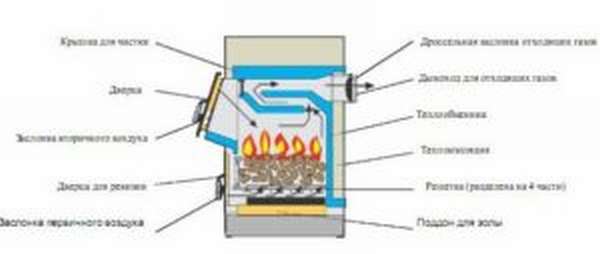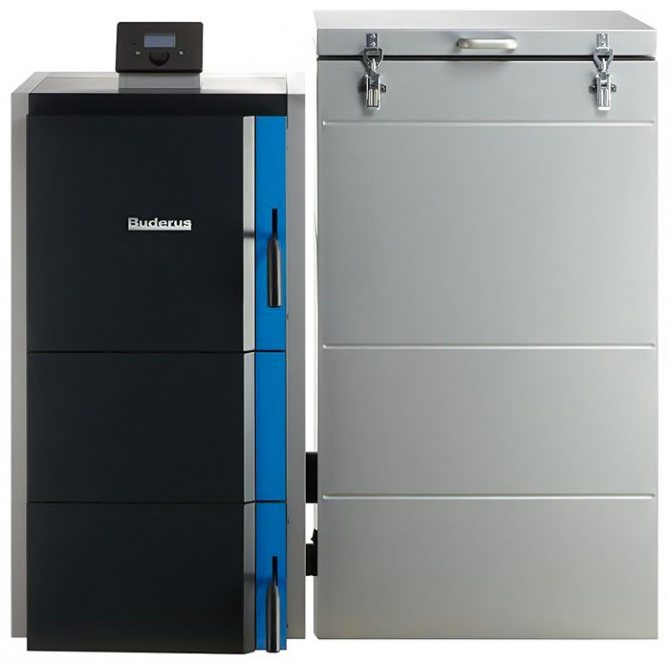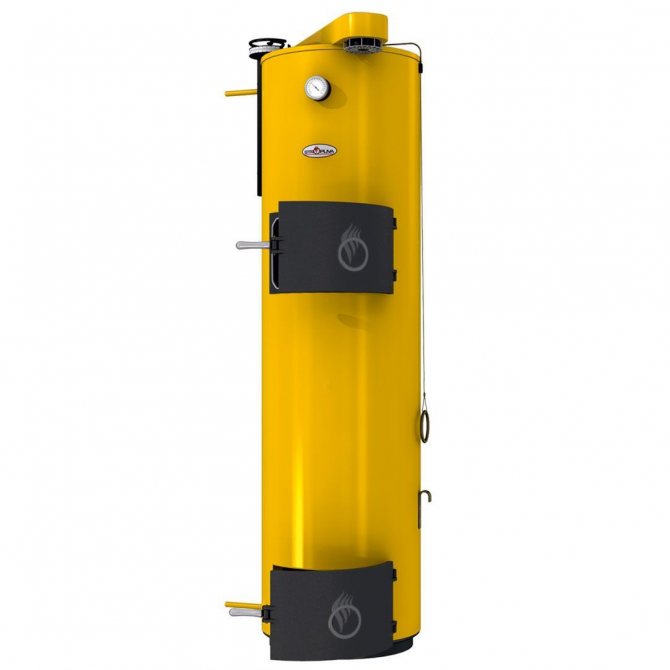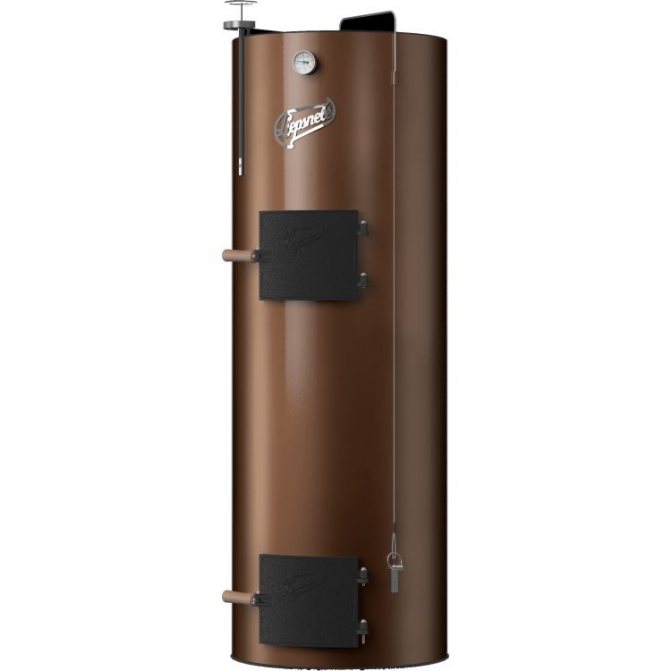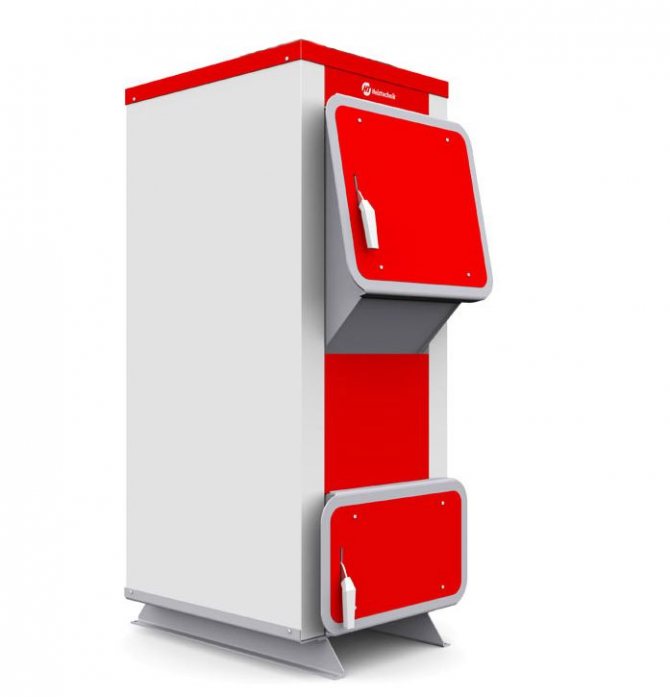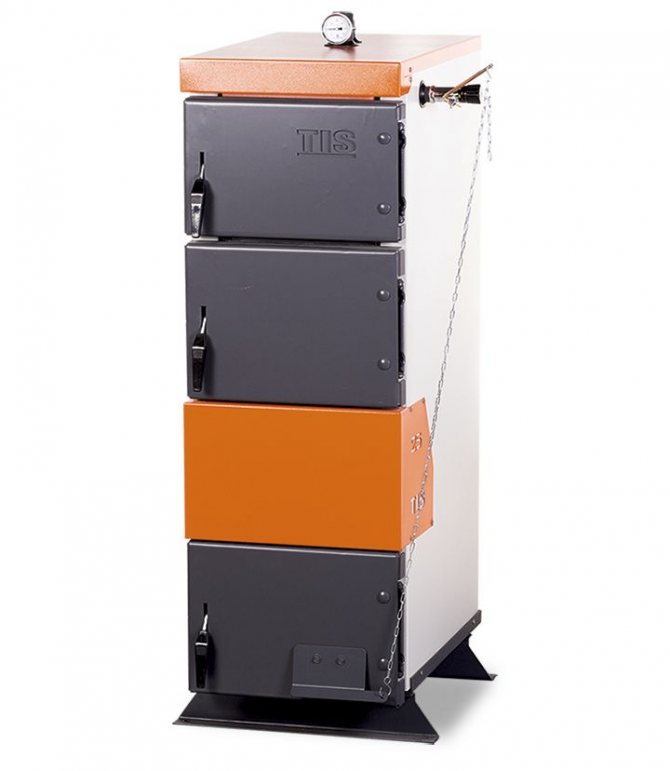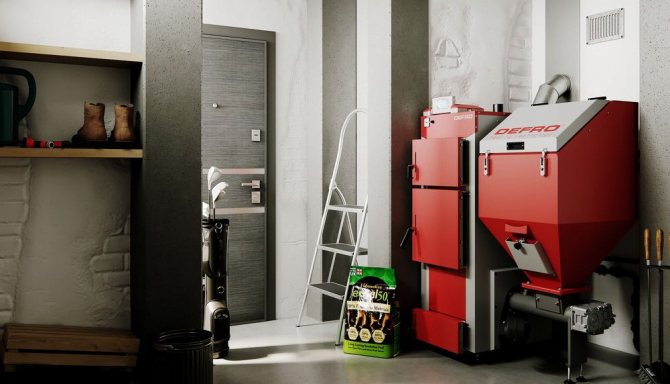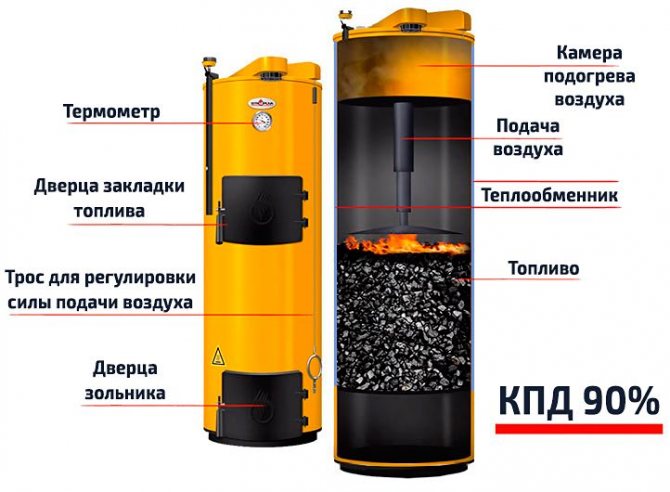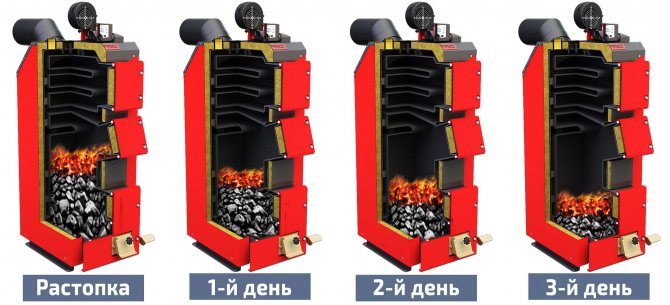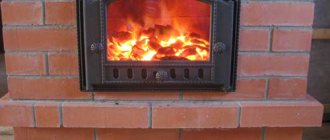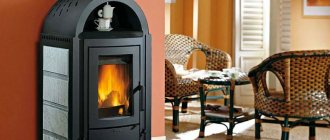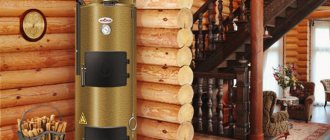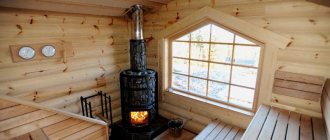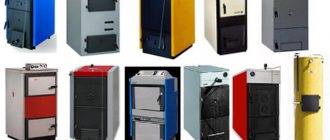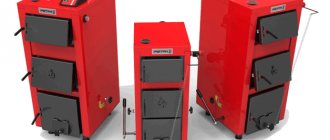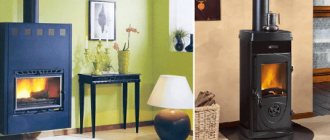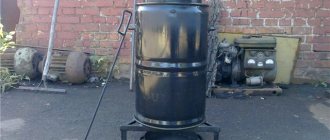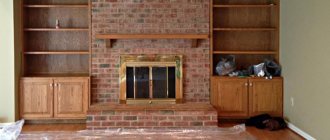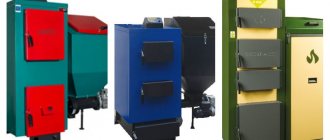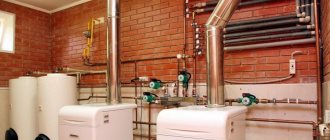Electrical installations
In recent years, with the development of solar energy, when it became possible to receive free electricity, heating a house using various electric convectors and infrared heaters has gained popularity in the domestic market. Such devices are reliable, they quickly heat up the room, while there is no need to lay a pipe system around the house, the homeowner will be relieved of the need to install heating radiators.
The advantages of electric heating include the following:
- ease of maintenance;
- an electric boiler can also be used to heat water;
- reducing the cost of installing and purchasing the necessary equipment;
- environmental Safety;
- efficiency and full automation of the heating system.
It is customary to refer to electrical heating systems as underfloor heating, which is often installed in the kitchen, bathroom and toilet. Today, there are various technologies for arranging a warm floor system, which are effective, they allow you to quickly heat up rooms, while consuming a minimum of electricity.
Of the minuses of this technology for heating a private house, only a significant consumption of electricity is singled out, which leads to a significant increase in utility costs. There may also be problems with heat in the house during power outages, which can be observed in remote villages, dachas and farms.
Where to buy a coal boiler for heating a private house
In Moscow
- Comfort-Eco, Dmitrovskoe highway, 100, building 2, tel. +7 (495) 921-37-61.
- My Kotel, Volokolamskoe highway, 116 bld. 2, tel. +7 (495) 221–56–79.
In St. Petersburg
- TekhnoDom, 57 Stachek ave., Komsomolskaya square, tel. +7 (812) 671–00–88.
- Kit-Teplo, st. Litovskaya, 8, +7 (812) 295–00–05, +7 (812) 248–18–88.
To summarize, it should be said that coal-fired boilers are the "golden mean" between ease of use and fuel costs, so if the house is not connected to the gas main, then its installation is fully justified. Even better - the automatic version: it will help you survive even a harsh winter with comfort.
How to heat so that coal burns as long as possible
The correctness of the combustion of a long-playing coal boiler largely depends on the availability of regulating automation and, of course, the quality of the coal itself.
Which coal is better to use
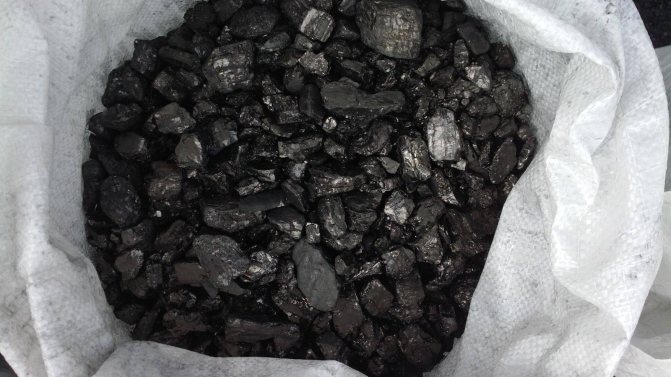
Manual boilers can operate on any coal fraction. But it should be borne in mind that the temperature of gases in the chimney during prolonged combustion is much lower than during direct combustion: the use of raw fuel can lead to the accumulation of excess moisture in the pipe and the formation of condensate - a black viscous liquid with a tar smell. Therefore, the relative humidity of coal (like any other solid fuel) should be no more than 15–20%.
Correct firebox
The long-burning boiler is fired according to the following scheme:
- Fuel filling - the distributor rises to its original position so that it is just above the loading door, and all the coal is immediately filled up.
- Kindling - dry chips and paper are placed on top of the coal, after which they are ignited and burned with the upper door open and the air duct closed.
- Combustion - when the temperature in the heat exchanger reaches 50-60 ° C, the door closes tightly, then the telescopic air duct regulator opens.
- Temperature control - the boiler automatically goes to the optimal mode, but if necessary, the temperature is corrected by the air duct damper.
At the end of the complete combustion cycle, it is required to remove the caked pieces of coal from the loading chamber, clean the ash pan and fill in a new batch of fuel.
Firewood
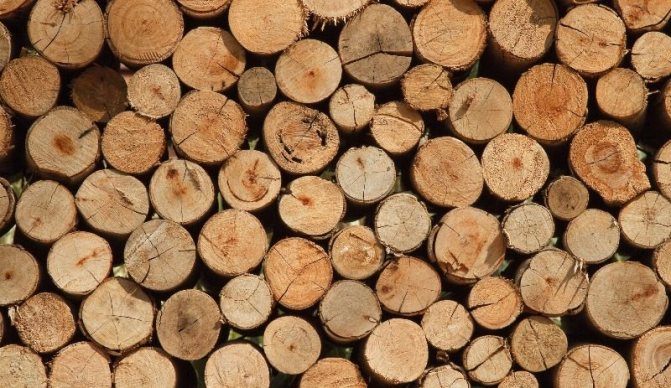

Firewood is another popular type of boiler fuel. Only dried wood is suitable for burning. Underdried firewood in the firebox begins to release moisture, which accumulates on the inner surfaces of the firebox and chimney. In combination with smoke and carbon monoxide, tar is formed - it reduces the operational properties of the boiler and reduces the permeability of the exhaust gases.
Choosing firewood
For melting, hard wood with a long burning period and slow heat transfer is optimal. Deciduous trees should be preferred over conifers. In the process of combustion, conifers emit a large amount of resinous substances, quickly contaminate the combustion chamber and heat exchanger.
According to the degree of hardness, wood species are divided into 3 categories:
- hard - white acacia, ash, beech, oak, maple, yew, hazel, pear;
- medium hardness - walnut, alder, sycamore, birch, cherry, sweet cherry, cedar;
- soft - poplar, aspen.
How to heat a boiler with wood
- At the first stage, it is necessary to warm up the heating device well. This will prevent smoke from leaking into the room. Sheets of paper are laid at the bottom of the fuel chamber, on them are flammable birch bark, chips and splinters, and on top are small logs (up to 15 cm in diameter). The space between the wood chips can be filled with paper for faster ignition.
- When the firebox is about half full, you should set fire to the paper and open the ash pan valve for better draft. Close the main chamber door.
- When the chamber and chimney are warmed up, and the preparatory bookmark begins to burn out, the firebox can be filled with large firewood. Logs can be laid out in a row or in the form of a well, leaving gaps between them for air penetration.
- As the wood burns out, you will need to make a new bookmark without waiting for the previous one to fade.
Long-burning boilers greatly simplify the work. The fuel is loaded in them every 6 hours due to the automatic regulation of the draft and the combustion process. Such devices should be melted in accordance with the attached instructions.
Coal heating equipment
Coal stoves
An ordinary stove can only heat one or two rooms, even if you use coal instead of wood to heat the house. True, it can be improved by embedding a heat exchanger for water heating inside the brickwork. The stove is good in its own way, but sometimes it can be dangerous due to the fact that it provokes carbon monoxide poisoning.
Important. The chimney damper can be closed only after the coal has completely burned out and the flames disappear in the firebox.
For heating a cottage with coal, a heating unit such as a boiler is much more efficient, reliable and safe.
Coal solid fuel heating boilers
The diagram shows the device of an improved coal boiler
By design, a coal-fired heating boiler is uncomplicated, but very effective. Its cast-iron heat exchanger and powerful grate are resistant to burnout and corrosion. Even the simplest of these devices have been regularly heating homes for many decades. But still, old-style boilers are inferior in performance and heat transfer to their current competitors.
The principle of operation of a heating boiler looks like this:
- as soon as a fire is lit in the firebox, a draft is created in the chimney and air is drawn into the fuel chamber;
- the coal is heated and partially burned;
- the gaseous products of coal combustion are mixed with the secondary air supplied inside and finally burned;
- the resulting gases give their temperature to the coolant, and then are removed through the chimney.
Modern coal-fired heating boilers steadily heat living quarters and outbuildings.They consume 2 times less fuel compared to outdated models. Advanced technologies have improved not only the construction and design of heating units, but also the very principle of fuel combustion. As a result, the homeowner no longer has to load another batch of coal into the boiler several times a day and remove the accumulated slag.
The enlarged combustion chamber is designed for a one-time loading of a large amount of coal, which gradually burns out over 6-12 hours. Forced airflow contributes to the fullest possible combustion of the fuel. Thanks to this, the consumption of coal for heating the house is noticeably reduced.
Large hopper of the automated heating boiler ensures long-term burning of coal
The automated supply of fuel from the bunker to the boiler "frees the hands" of the user. He becomes free from the obligation to constantly monitor the operating heater. The hopper has enough capacity for non-stop coal burning for a week.
Reviews of coal heating demonstrate how satisfied users are with the practicality of automated coal boilers. This is very convenient - at the beginning of the heating season, start up the boiler, and all winter only add coal to the hopper as it is emptied. It is also not necessary to remove ash and slag too often, only a couple of times a month.
Lighting coal for heating in a boiler, especially anthracite, can be difficult for an unaccustomed person. First, the boiler is fired with wood or a special mixture, and then little by little coal is added. When the combustion becomes stable, you can fill in anthracite in large portions. How much and how often will depend on the boiler model and will be more precisely determined in the practice of its use.
Do not use gasoline to ignite coal in the heating boiler!
But what if the electricity in the house goes out? In this case, the automatic supply of coal to the boiler fuel chamber will stop. At the same time, the circulation pump will stop working and water will stagnate in the heat exchanger. But the boiler will not boil, because coal combustion will go into a weak mode. Then, when the power supply is restored, the coal will ignite again.
Maintenance of a solid fuel boiler
Boiler maintenance measures are reduced to the need to clean the heat exchanger and flue ducts. Soot settles on their surfaces, and this phenomenon reduces the efficiency of the heating unit by 15%. The frequency of cleaning the coal heating boiler can vary: old cast-iron models have to be cleaned 2-3 times per season, and modern ones once every 2 years.
Features of the coal heating system
Usually, those who install solid fuel boilers for themselves immediately begin to understand that they have to constantly work with such a system: this applies both to tossing coal for heating, and to checking the readings of devices. In addition, there are frequent temperature changes due to the fact that the fuel burns unevenly. The combustion chamber and oven must be cleaned. Now many people use domestic coal-fired boilers with long burning - both for heating residential premises and for heating commercial ones.
Little nuances
Boilers for heating and cooking
It is important to take into account that each boiler model has its own specific fraction of coal, which it can efficiently process. And if you have chosen this indicator incorrectly, then there is a possibility that the boiler's furnace, or rather, its grates, will clog
Its efficiency will decrease and fuel consumption will increase.
You will have to clean the firebox yourself, and this, frankly, is an unpleasant process - dusty and dirty. Experts agree that the best coal is anthracite
It doesn't matter what size it is, because such a material gives off heat well in any form.
But here the indicator of time matters. Fine anthracite burns faster, so a new coal charge will be required.Hence the conclusion, supported by experts - choose anthracite the size of a fist. This is heat, and a long burning time, and the efficiency of the heater.
And one more thing that concerns traction-based efficiency. If this indicator is weak, then it is not necessary to count on the good performance of the boiler. Therefore, advice - be sure to heat the chimney. How? For example, if the boiler is small, then a lit newspaper inserted into the chimney will gradually warm it up. However, coal heating has its drawbacks:
- Troubles for fuel filling and cleaning from slags.
- Waste and slag must be disposed of.
- The ubiquitous coal dust - no matter how carefully you work, it will still make itself felt in one form or another.
- Coal procurement.
All these disadvantages would be less noticeable if the boiler room could be organized in the basement of the house. Unfortunately, this is not always possible.
Types of coal for the furnace
Depending on the material
Material for coal-fired stoves is the main criterion for choosing a fuel and stove. Let us examine these qualities in more detail.
For cast iron stove
Cast iron, by its characteristics, easily tolerates high temperatures, therefore, such stoves, and brick ones, are better suited for burning them with coal. Coals designated by letters:
- "A" - anthracite;
- "D" - long flame;
- "DG" - long-flame gas coal.
Expert opinion Pavel Kruglov Pechnik with 25 years of experience
This coal is better for the furnace than other types. Furnaces equipped with long-burning systems are recommended to use long-flame and similar gas types for them. Fuel "DG" is most suitable for pyrolysis types of furnaces - they have an increased formation of exhaust gases during fuel combustion, from an oxygen-depleted furnace atmosphere.
Brown coals are not suitable for cast iron stoves - a high ash content will require cleaning the chimney after 20-25 days of operation.
For brick oven
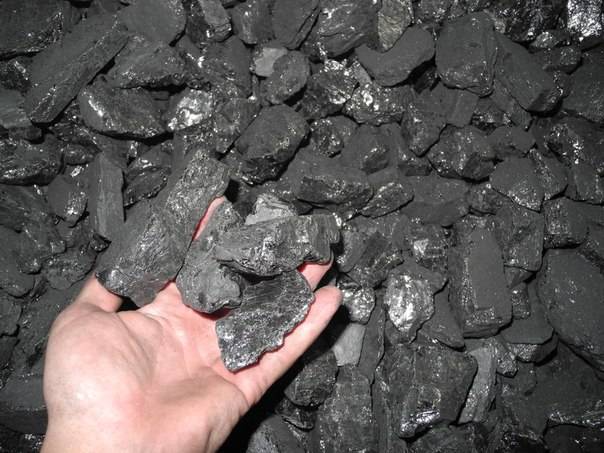

The best coal for furnaces and boilers is the rock under the letter "A". But some stove-makers recommend melting such stoves with long-flame coal nuts. After the temperature is set, anthracite is poured.
This option allows you to maintain the temperature in the room and save expensive anthracite. This bookmark lasts until the evening. At night, a seed is poured, which maintains the temperature in the house for 8-10 hours.
Important! Boilers and stoves of different designs can change their tastes, so go to the forum and ask what kind of fuel is suitable for your equipment.
This will not only save you money, but also allow the heater to operate normally. When choosing, a lot depends on your capabilities. You can buy fuel, grade "A" and provide yourself with anthracite with excellent characteristics.
Expert opinion Pavel Kruglov Pechnik with 25 years of experience
But for heating small garden houses, it is better to buy coke or even brown coal. They will cope with their task no worse than anthracite, but are much cheaper. The low price of lingitis makes such fuel in demand among summer residents or rural residents.
For steel furnace
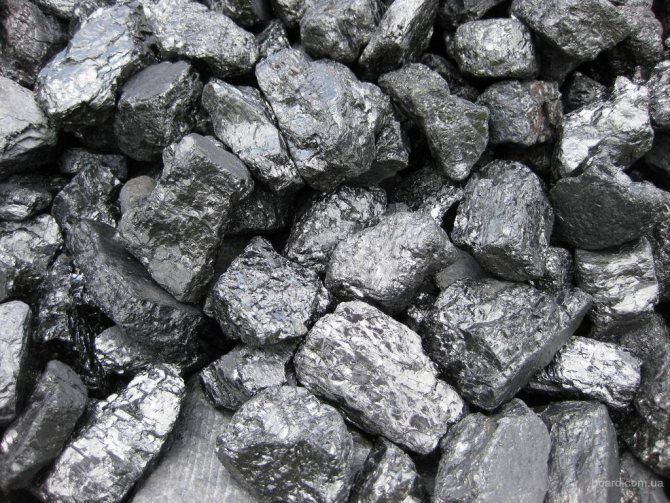

It is recommended to use expensive anthracite, but coke-oven fuel is also suitable. It is more important to choose the size of its fractions and apply a mixed scheme of use.
We note right away - such ovens must necessarily be made of thick and only heat-resistant steel. If you make a stove - a potbelly stove from an old barrel, it may not be finished until the end of the heating season. The high temperature during fuel combustion will require the purchase of expensive furnaces with parts with a thickness of 8-10 mm. This increases the mass and its price.
If you purchased a coal-fired steel stove, be sure to read the instructions. In it, manufacturers indicate its brands and types.
Important! Regardless of the material of the stoves, before firing up the unit, be sure to open the air damper on the chimney, the firebox door and the blower and pull out the box for collecting ash. Only after making sure that there is sufficient draft, you can fill the firebox.
To do this, it is recommended to use firewood for kindling, then pour the "nut" into the compartment and use the "seed" before the night.
Depending on the destination
Such fuel can be used to heat a house, greenhouse or sauna. Let's analyze the main installation sites and the choice of types for them.
For baths and saunas
If you like the smell of burnt wood, then this fuel will not work for you. Coal burns without smell and flashes of fire. Coal for the stove in the bath, gives heavy and humid steam for the steam room. We also add a high level of ash toxicity to humans.
These are the disadvantages of such a sauna fuel. But the high temperature in a short period of time is an advantage for large baths. For a small steam room, it is better to use an old, time-tested fuel - wood.
For home heating
The choice depends on the size of the room. For a small garden house, coke oven or even brown coal is suitable, but you will need to clean the chimney more often.
Such fuel has a low heating temperature than anthracite, but costs an order of magnitude lower. Long flame and long flame gas coal are preferred for heating medium to large homes. But the highest rates are given by the use of anthracite.
The choice depends on the money that you can allocate for the purchase of fuel. Using the mixed coal loading described above can significantly reduce the cost of purchasing coal. Unlike stoves in a bathhouse, the house needs to be constantly heated.
Therefore, you will need to accurately calculate the entire annual coal supply and purchase several types of fuel.
Heating process
The process of starting the combustion of a solid fuel boiler is divided into two main stages.
Stage 1
Even if you constantly use only coal as fuel, kindling should be done with dry wood. Before directly laying coal, you must first burn a small portion of firewood to coals. They are laid evenly over the grate and ignited.
In this case, it is necessary that the pipe valve be slightly open.
Stage 2
When the fuel is kindled, the pipe valve opens all the way and the first portion of solid fuel is added. The layer should be uniform over the entire grate 5 to 8 cm thick. After that, open the blower and close the fire door. As soon as the coal is well lit, you need to throw in the rest of the coal, which should also be evenly distributed over the grate.
The thickness of the second layer is 12-20 cm.
Tip 1 choose the right moment
Subsequent portions of solid fuel should only be added after the charcoal has burned well.
Tip 2 don't forget about the doors
When adding, if you open the fire door completely, you must definitely cover the blower door.
Tip 3 don't be afraid to wet the charcoal
To increase the combustion time of coal and, accordingly, its heat transfer, it is necessary to moisten it with water before throwing it. The amount of moisture depends on the type of coal you use:
- Strongly caking coals, consisting of fine fractions, grades Zh and PZh, require abundant wetting. You need to add so much water that all the particles stick together. But you also need to ensure that there is no excess moisture;
- Small coals of grades CC, T and PS require moderate moisture;
- Long-flame coals are only sprayed with water to precipitate dust;
- Anthracite, in general, does not require wetting. If it contains a lot of small particles, you can sprinkle it a little with water to prevent dust.
Water heating
This type of heating belongs to the category of the most simple and reliable.The principle of operation of hot water heating is based on the heating of water by means of a boiler and its subsequent distribution to the room radiators thanks to the piping system.
The use of a circulation pump ensures constant circulation of water in this closed system. The coolant in the water heating system, as a rule, is water or antifreeze, and the boiler can operate on coal, wood, natural gas, kerosene and other types of fuel.
The pipelines used for the hot water heating device can be made of various materials:
- Steel.
- Copper.
- Polymeric materials.
Steel pipelines, unlike stainless or galvanized ones, are characterized by a low value of corrosion resistance. Copper piping is highly reliable and can withstand high temperature and pressure.
Pipelines made of polymeric materials are quite durable, exclude the formation of deposits on internal surfaces, and are highly resistant to corrosion.
Their disadvantage is the presence of a large coefficient of thermal expansion, which contributes to the formation of leaks.
Thus, the most effective water heating of a cottage or a private house can be arranged using copper pipelines. This opinion is shared by the overwhelming majority of experts.
The only drawback of pipelines made of copper is the relative high cost, which is compensated for by the absolute reliability and the ability to last for several generations.
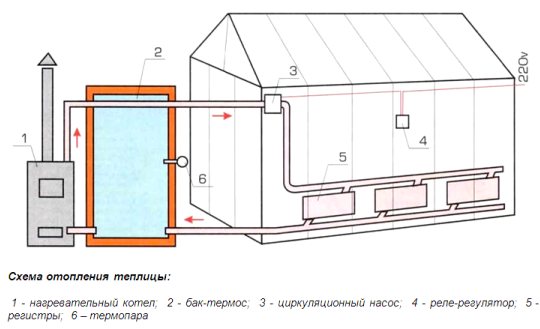

Water heating circuit. Click to enlarge.
Indoor piping can be single-pipe, double-pipe or collector.
Single-pipe wiring does not allow to fully control the performance of the entire system due to the impossibility of blocking the access of the coolant to one of the radiators.
The variant with the use of a two-pipe system is the most efficient (for individual houses) heating, which allows you to freely adjust the temperature inside each room.
This type of wiring involves the supply of cold and hot pipelines to each radiator. The distribution of pipelines can be carried out in a star shape or in the form of a "loop".
Collector wiring involves the connection to each heating device from a common collector of the supply and return pipelines.
Collector systems are distinguished by a high degree of versatility due to ease of installation and adjustment, the ability to replace damaged pipe sections (without destroying the floor structure).
What heating is better (single-circuit, double-circuit or collector) for a country house? The answer is obvious - two-pipe and collector.
Steam heating: advantages and disadvantages
implies the following mechanism: in the boiler, water is heated to the boiling point, and the resulting steam enters the radiators. The steam is then condensed into liquid and returned back to the boiler.
Advantages:
- high heating rate regardless of the area of the house;
- no heat loss in heat exchangers;
- ecological cleanliness of the coolant;
- the cyclicity of the coolant - steam can be used several times;
- the minimum probability of freezing of the structure.
There are also negative aspects of such heating:
- there is no possibility of regulating the temperature inside the house;
- short service life of the system due to the high temperature of the coolant;
- high likelihood of corrosion by vapors;
- the need to install a lattice.
The boiler can operate on the basis of gas, solid, liquid or combined fuel. In order for the heat transfer of the equipment to be as efficient as possible, it is necessary to choose it correctly. So for heating a private house with an area of 60-200 m², a unit with a capacity of 25 kW is required (if the area is 200-300 m², then the boiler power must be at least 30 kW).
Competently combining fuel, you can save on heating your home.
How much fuel is required
Example 2. Calculation of gas consumption for steam heating. Suppose the area of a private house is 100 m². Accordingly, the power of the boiler for heating is 25 kW.
- 25 kW * 24 hours * 30 days = 18,000 kW / hour. This figure does not reflect an adequate situation, since the boiler does not always work at full capacity. The average value is more acceptable in this case. 18000/2 = 9000 kW / h.
- 7 months * 9000 kWh = 63000 kWh - annual fuel consumption.
- Considering that 1 m³ of fuel produces 10 kWh of energy, we get: 63000/10 = 6300 m³.
- In monetary terms: 6300 * 4.97 = 31311 rubles per year.
The principle of operation of a coal-fired boiler
Coal boilers have a slightly different combustion process than other systems. Inside the device, the fire does not burn from bottom to top, but vice versa. Due to this, the burning time of one batch of coal increases and its maximum complete combustion is ensured.
In the boiler, almost the same process takes place as the burning of an ordinary candle. Coal burns for a long time, the heat that is obtained in this process goes to the heat exchanger. When burning, air comes from above using a special fan. The combustion chamber in a boiler that uses coal heating in a private house can be quite large and reach a volume of up to 500 liters. This means that many different fuels can be loaded at one time, which will heat the house for several days.
Heating briquettes
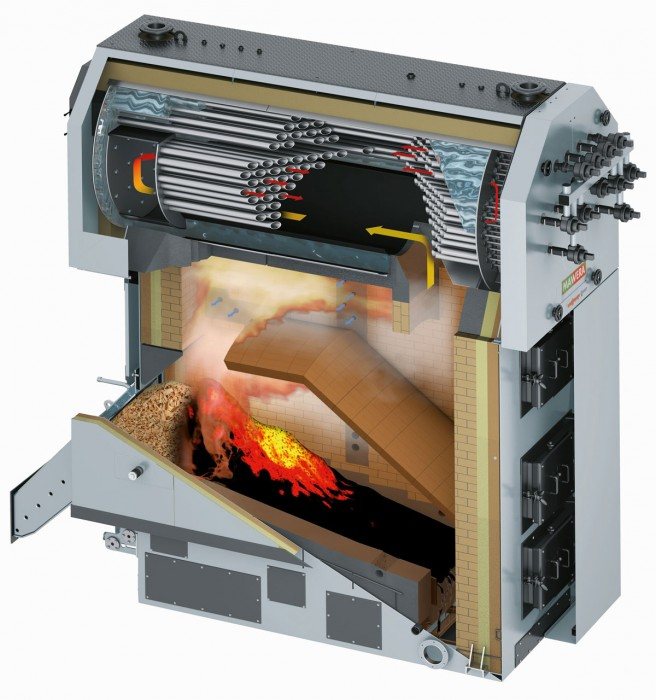

Long burning solid fuel boiler
These boilers are also equipped with temperature control sensors. The use of coal will reduce the amount of harmful substances that appear as a result of combustion. Coal boilers consist of a furnace, where this process takes place, a heat exchanger for heating coal, a grate. The heat exchanger can be made of steel or cast iron. Steel boilers for coal are slightly cheaper, while cast iron boilers will last longer.
Today, coal heating has become a practical solution for those people who like to relax in the country.
And one of the most important issues in arranging a heating system is the cost of equipment. Unfortunately, the cost of the device will seem quite high to many - after all, even the cheapest models of boilers cost at least 20,000 rubles.
For those who have small country houses and other structures that need heating, domestic models of low-power coal-fired boilers are suitable.
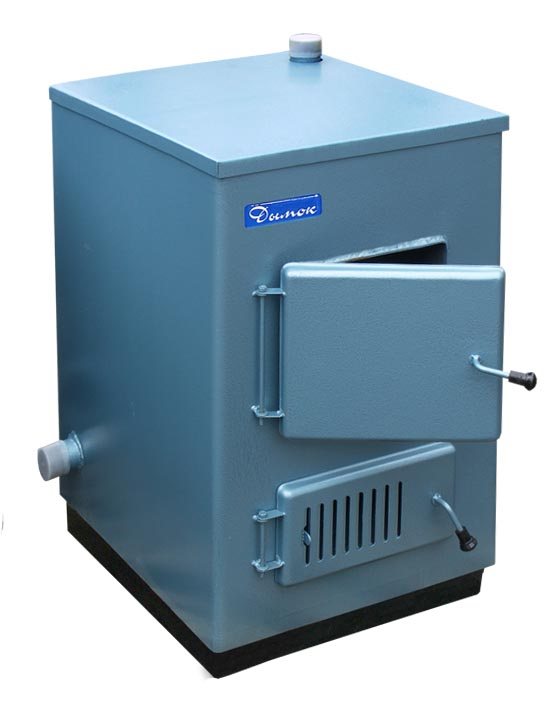

Domestic solid fuel boiler
Firewood, coal, etc.
Many people can now me - and why are we considering this option, no one has been heating this way for a long time, and the apartment cannot be heated like that! But no guys, it's still relevant, remember the same "pellet" boilers, of course, this is only logical for a private house, in an apartment we justly will not mount such a system.
Firewood
I don't even know how to present the calculation to you, here it is impossible to somehow deduce the amount of firewood and heat received from them. It all depends on the material, what kind of firewood it is (oak, birch, pine, etc.) because they all burn differently and give different heat. But I can say with confidence that you need to make some kind of shed for storing these firewood or coal - 100%, which is already burdening many owners.
Heating with firewood can be really cheap and even free, if you yourself chopped it up and brought it somewhere. But if you buy, then KAMAZ (about 6 cubic meters), and this is how much will be needed for the heating season, it costs about 10 - 12,000 rubles, if divided by 6 months of heating, this is about 1.5 - 2,000 rubles. per month!
Coal
Coal will come out a little more expensive, but it is needed less and it keeps the temperature longer (we buy about 3 cubic meters). If tamped in the dry residue, these are the same 2000 rubles. - month.
Pellets
A new heating system, special, expensive boilers, which, by the way, can be well automated.
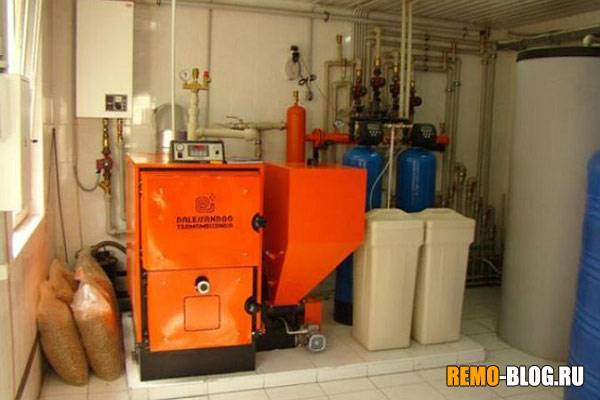

They are fueled with special pellets - "pellets", it is also not easy to calculate the consumption! But again, based on my experience, I will say - the consumption of pellets per month for 2 - 2.5 thousand rubles - our 100 squares.
How to properly shovel coal
In order to avoid the rapid combustion of coal, you need to constantly shoot it. How often and how intensively you need to do this depends entirely on the type of coal:
- Brown ash coals require frequent stirring, otherwise they will burn very quickly and turn into ash. It is best to load this type of coal in small portions;
- All other types of solid fuels should be fired as rarely as possible so that the firebox does not cool down and the coals do not fall into the grate and do not mix with the resulting slag.
Which coal is best for the furnace and boiler
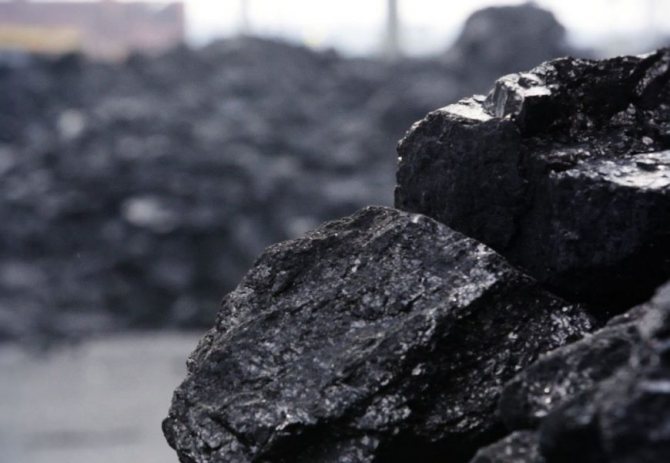

If there are no instructions for the boiler, or an ordinary brickwork stove is used as a heating unit, then coal will have to be selected experimentally or by listening to the advice of "experienced" ones.
As for household boilers, it is better to fire them with long-flame coal "walnut". As it burns, anthracite is poured on top in an even layer. It allows you to provide heat throughout the day due to its long burning. In the evening, it is already allowed to fill the boiler with a "seed", it will be enough to keep the temperature at the same level until the morning. However, do not forget about the type of device installed. The described instruction is not universal, therefore, in some cases, the fuel use scheme may be different.
Brick ovens are best heated with wood. When they burn out, it's time to lay coal briquettes, it is also allowed to use a "seed", ideally a long-flame one. Until the fire engulfs the coal completely, the stove dampers must not be closed to ensure the flow of oxygen. When the furnace is on fire, you can use coarse coal, a "fist" or "nut" is suitable for these purposes. Another scheme is also allowed: first, "nut" is used, and in the late evening time and at night - "seed".
The best known manufacturers and models: characteristics and prices
Recently, Russian coal-fired boilers have become more and more popular: their quality is constantly improving, and the cost remains quite low in comparison with foreign counterparts. Nevertheless, the most functional and automated boilers are still from European manufacturers.
Please note that almost all models have different power versions.
Direct combustion
ZOTA "Master" 20
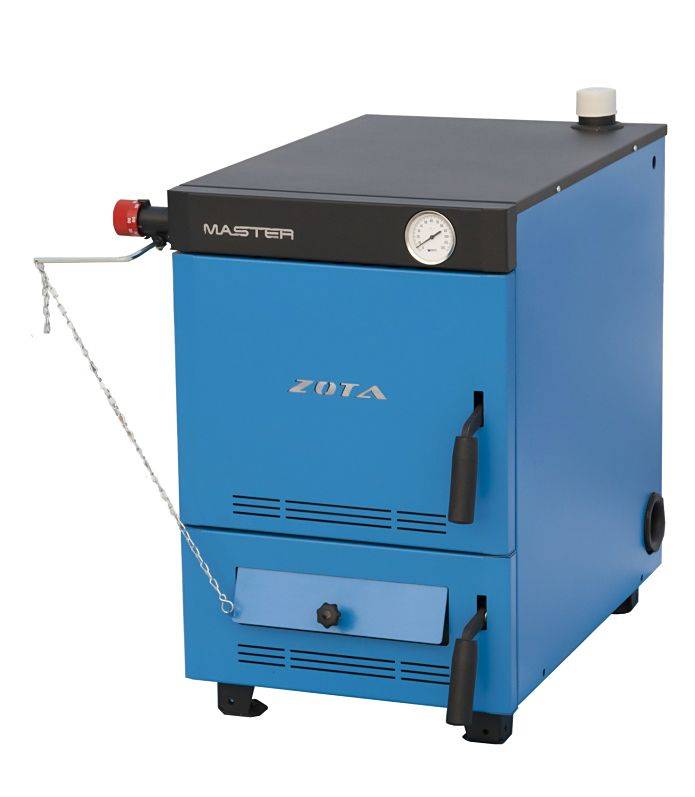

ZOTA "Master" with a power of 20 kW is a very budget insulated (basalt cardboard) boiler that can withstand pressure up to 3 bar and runs on almost any fuel: coal, wood, pellets and gas (optional). It also uses electricity as an auxiliary heat source (TEN).
Country of origin: Russia, OOO TPK KrasnoyarskEnergoKomplekt.
Cost: 25,690–31,889 rubles.
Protherm "Beaver" 20 DLO
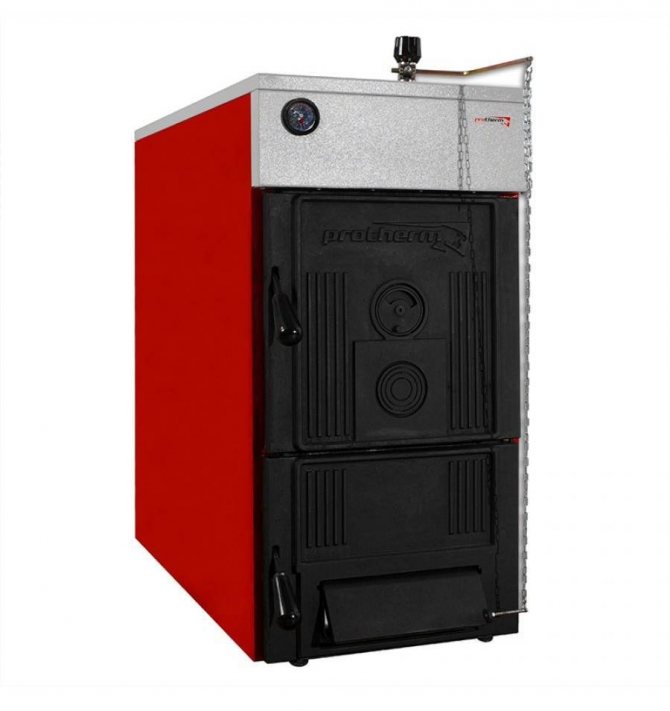

Protherm "Beaver" with a capacity of 20 kW is a non-volatile boiler with an operating pressure of up to 4 bar, which has an increased service life, since it uses a high-tech (GG20) cast-iron heat exchanger that is resistant to corrosion and thermal shock. It can only be heated with various coal and wood.
Country of origin: Slovakia, Vaillant Group LLC (Vailant Group rus).
Cost: 67,600–68,445 rubles.
Bosch "Solid" 2000 B SFU 12
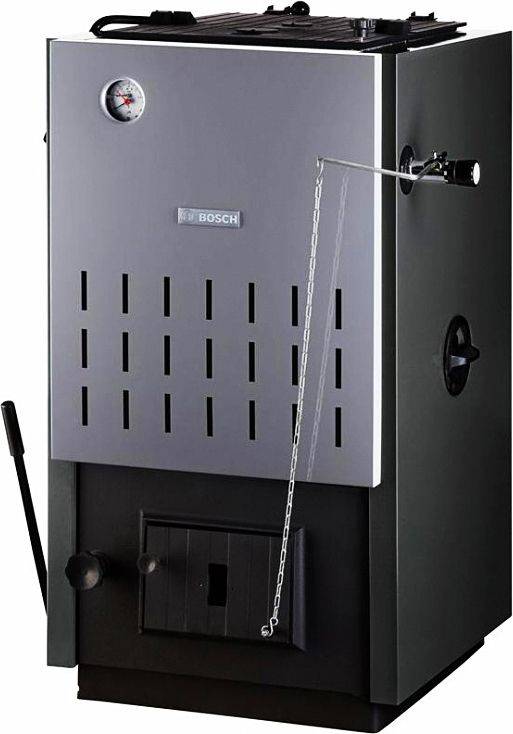

Bosch "Solid" 2000 B SFU with a power of 13.5 kW is a simple, reliable boiler, sharpened for the use of brown coal, but can also burn coal, coke, firewood and wood waste. Equipped with a built-in pressure control device (max. 2 bar), thermal protection and gas swirlers.
Country of origin: Germany, Bosch LLC (Bosch Thermotechnika rus).
Cost: 48 764 - 51 436 rubles.
Long burning
Stropuva S15U
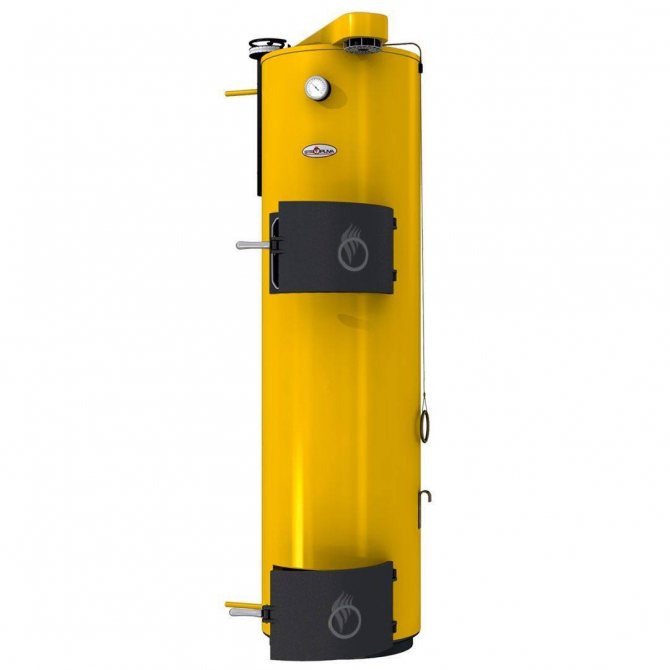

Stropuva S15U with a capacity of 15 kW - thanks to a volumetric furnace that can hold up to 240 kg of coal, this innovative boiler is the unrivaled leader (among compact devices) in terms of burning time per tab: up to 7 days. It consumes coal, pellets, briquettes and firewood, at a maximum pressure of up to 3 bar.
Country of origin: Russia-Lithuania, STROPUVA LLC (STROPUVA).
Cost: 81,500-99,778 rubles.
Buderus "Logano" S181-15 E
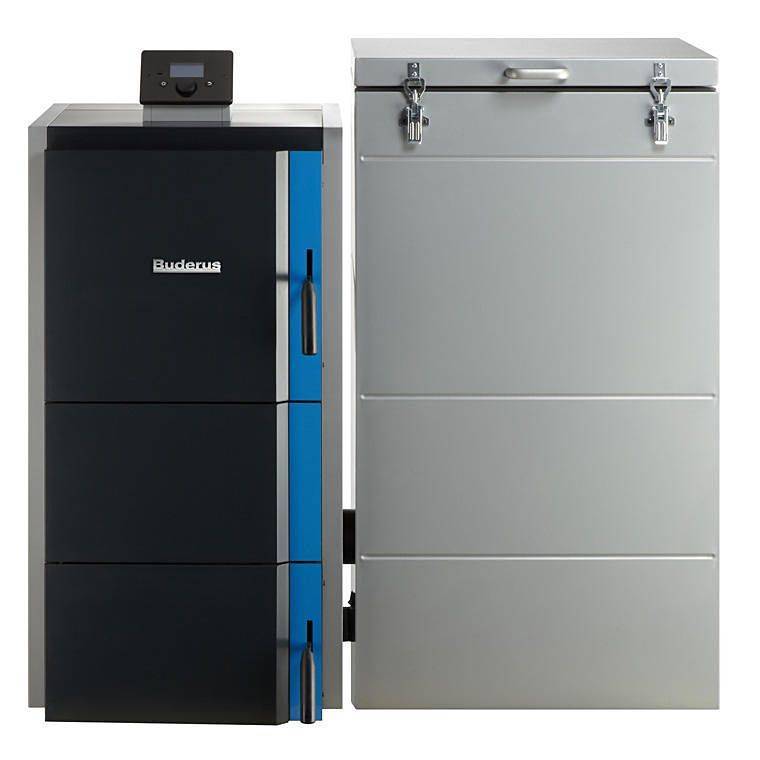

Buderus "Logano" S181-15 E with a capacity of 15 kW is one of the best bunker automatic coal boilers for heating a private house, with built-in water and gas temperature sensors. The improved design of the heat exchanger ensures long burning of coal / pellets and can withstand pressures up to 3 bar.
Country of origin: Germany, Bosch LLC (Bosch Thermotechnika rus).
Cost: 252,000–258,840 rubles.
LIEPSNELE L20U
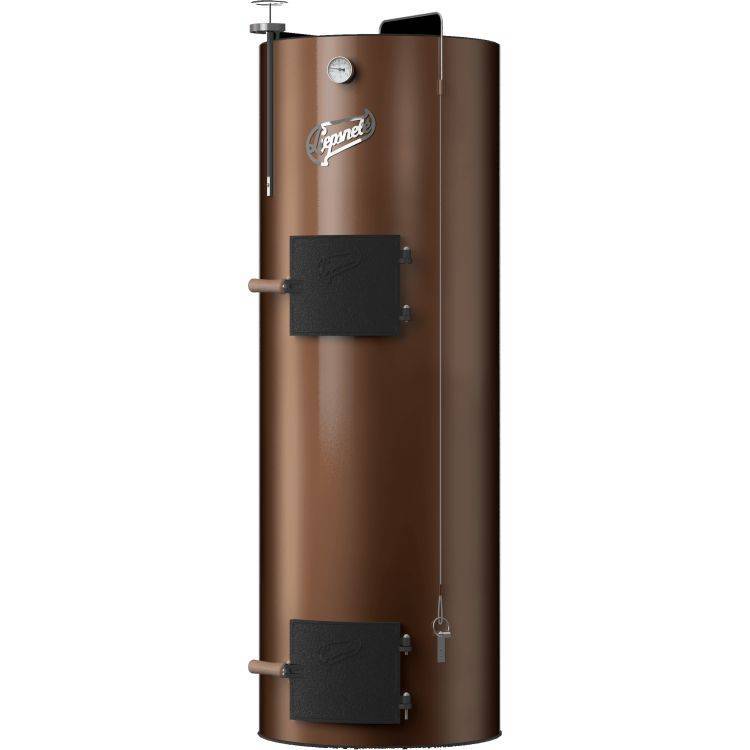

LIEPSNELE L20U with a power of 20 kW is an almost "omnivorous" solid fuel unit that consumes coal, firewood, coal briquettes and pellets, peat, wood chips, other wood waste, etc. When fully loaded with coal, it maintains combustion for up to 7 days. The pressure level is limited to 1.5 bar.
Country- UAB (Vakaro Race).
Cost: 85 449–90 456 rubles.
Galmet "CARBO" 21
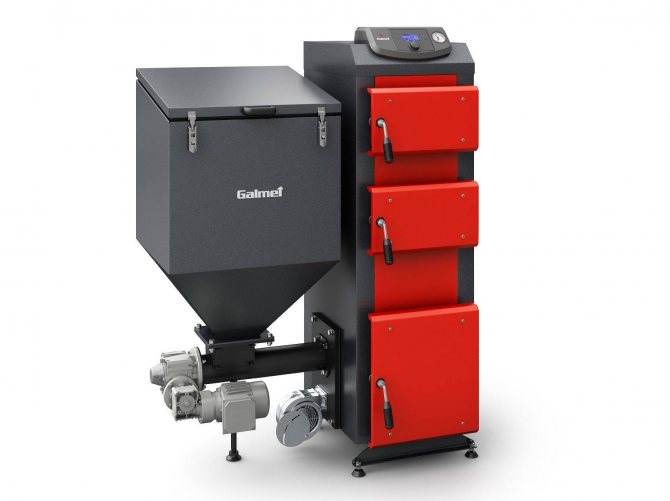

Galmet "CARBO" 21 with a capacity of 22 kW is a Polish semi-automatic coal-fired boiler already in its basic configuration has a fairly rich equipment: an intelligent PID controller that controls all boiler components and controls the combustion process, a flue gas sensor, a thermometer and a pressure gauge. Pressure limit - up to 2 bar.
Country of origin: Poland-Russia, GALMET LLC (GALMET-RUS).
Cost: 113,890-116,759 rubles.
Top Models
Consider the best factory-made models, and then move on to making a coal stove with your own hands. These models are suitable even for a large country cottage. You can buy them on the manufacturer's website by submitting an online application.
| Name and price (rub.) | Characteristics | ||||
| Room area m2 | power, kWt | Dimensions, mm Chimney, mm | Weight, kg | ||
| Zota stakhanov 100, from 370000 | 1000 | 100 | 900x1608x1796, 800 | 880 | |
| Teplov T-100, from 185000 | 1000 | 100 | 1770х810х810, 250 | 900 | |
| Vulkan EKO-100, from 330,000 | 1500 | 100 | 1770х810х810, 250 | 900 | |
| Bourgeois-K T-100A-2K, from 272000 | 1000 | 100 | 780x1420x1890, 250 | 900 | |
| Ferroli Forest 100, from 1200000 | 1000 | 115 | 2898x4533x2700, 200 | 1230 | |
What are solid fuel coal boilers
Solid fuel coal boiler is a modern heating unit, in which anthracite, coal, long-flame, gas, black, brown coal, pressed briquettes, and also some other types of solid fuel can be burned to obtain energy and then heat the coolant.
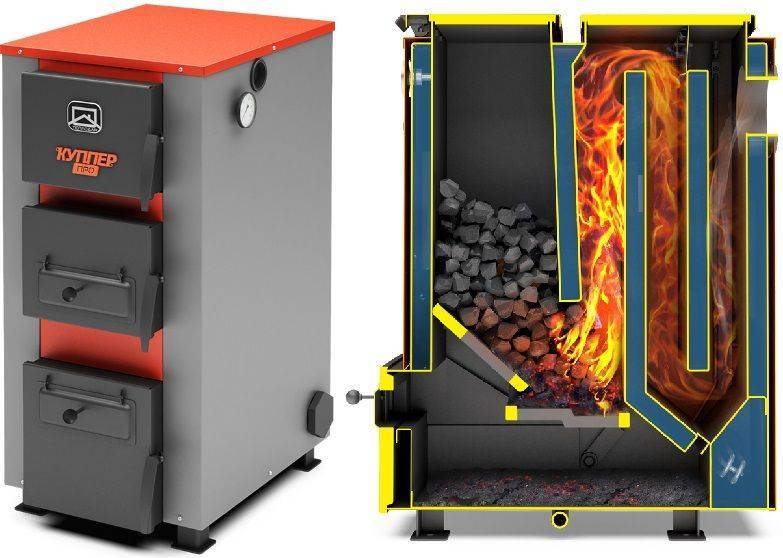

The modern coal-fired boiler Teplodar Kupper in section.
In fact, boilers of direct (bottom-up) combustion are the successors of the traditional Russian stove, but if a massive stone (brick) structure should be laid even at the preliminary stages of building a house, then a more compact device can be connected to an existing system.
Application and effectiveness
Coal-fired boilers are installed in residential and commercial buildings (summer cottages, cottages, offices) located in areas where connection to the gas supply system is problematic. It is ideal to use a coal boiler for heating a private house with an area of up to 100-150 m2.
Comparison of the efficiency of boilers using different types of fuel:
| Energy resource type | Calorific value, mJ (kW) / kg (m3) | Fuel price, rubles / ton (m3) | Efficiency | Cost of kW of energy, rub. |
| brown (w ≈ 20–40%) | 12,9 (3,6) | 2700–3200 | 70 % | 1,71–1,27 |
| stone (w 7-15%) | 27,1 (7,5) | 6000–7000 | 70 % | 1,14–1,34 |
| anthracite (w ≈ 1–3%) | 31,1 (8,7) | 8000–8500 | 70 % | 1,31–1,40 |
| natural gas | 36,5 (10,3) | 5400–5700 | 90 % | 0,63–0,65 |
| firewood (w ≈ 60-50%) | 8,1 (2,2) | 1300–1500 | 60 % | 0,98–1,05 |
| firewood (w ≈ 30–20%) | 11,2 (3,1) | 1500–1800 | 60 % | 0,76–0,83 |
| granules (pellets) | 17,2 (4,7) | 7000–9000 | 85 % | 1,75–2,25 |
| briquettes (euro wood) | 16,1 (4,3) | 6000–8500 | 85 % | 1,65–2,32 |
Compared to gas, which burns almost completely, coal leaves behind a lot of ash, which means that it has a lower combustion efficiency and part of the money spent on fuel will inevitably go to pay for "garbage waste", in the truest sense of the word.
The second closest competitor to coal is firewood. They are obviously cheaper, but not so convenient to use: in addition to the fact that they will have to be brought to the desired fraction (or buy chopped, but more expensive), you also need to throw firewood into the furnace every 3-5 hours, while coal burns for 6-10 hours.
Device and principle of operation
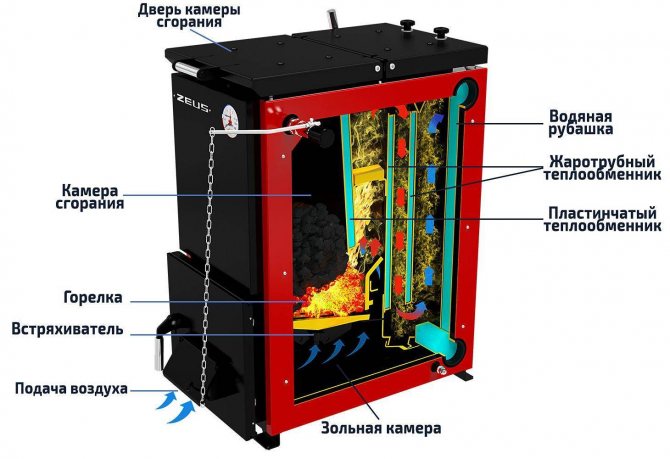

Schematic representation of the principle of operation of coal-fired boilers.
The fundamentally constructive device of a coal-fired boiler does not differ from any other solid-fuel unit, that is, it consists of the following units:
- outer capacious cylinder, which is also a body;
- a layer of insulating material covered with cladding panels;
- an inner cylinder located on the same axis (coaxial) with the first;
- combustion chamber (firebox) diverted to the lower part of the inner cylinder;
- an opening (blower) adjustable by the flap to create and enhance traction;
- variable system of air outlet and air supply pipes;
- ash collection compartment and instrumentation (optional).
The principle of operation is extremely simple: due to the draft of the chimney, air enters the furnace, which causes the combustion of coal and the release of thermal gases. They, in turn, heating the inner walls, convert heat into hot steam or transfer it directly to the water circulating in the heat exchanger system.
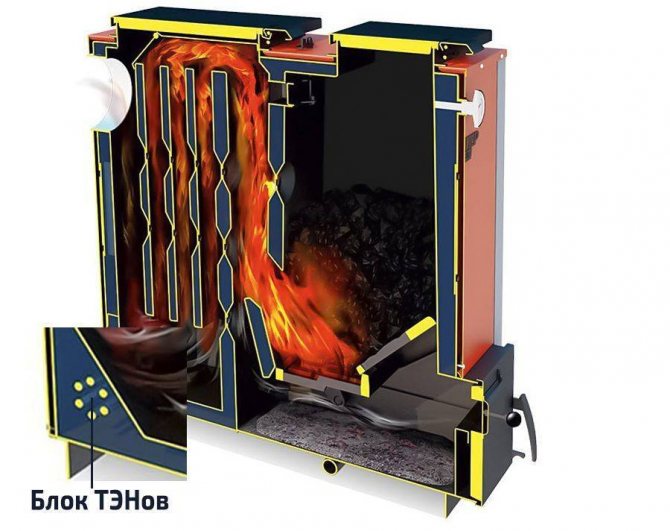

Some boilers, like TeplodarCupper Carbo 26, are equipped with heating elements for additional heating of the coolant.
The heated water supplies the pipes of the home heating system and / or hot water supply (DHW), and then, after passing through a full cycle (circuit), it returns back to the boiler. Waste heat gases enter the chimney, where, due to their energy, the optimum temperature for creating draft is maintained.
Device
A do-it-yourself coal stove includes the following elements:
- blew,
- firebox,
- chamber for additional drying of fuel,
- chimney.
The design of the firebox and chimney differs from analogs working on wood. The firebox has two compartments. Firewood is fired in one compartment, coal is dried in the other. As soon as the temperature is sufficient, the coal also starts to burn. This is due to the fact that coal has a rather high ignition temperature and it simply will not work to ignite the furnace in a standard way.
A combined firebox is often used, which can work both on wood and coal. This option is the most rational for a charcoal stove for heating a house.
